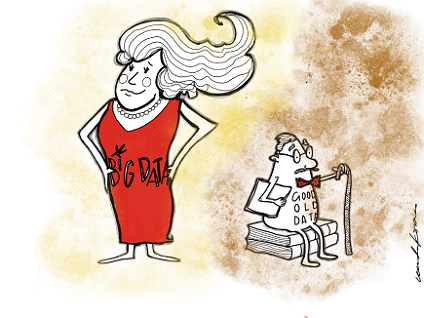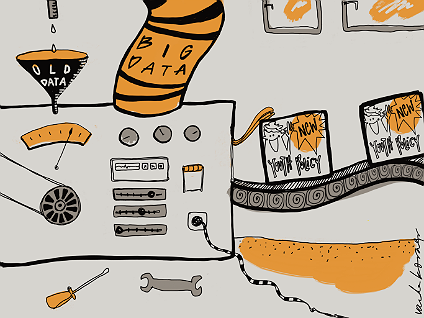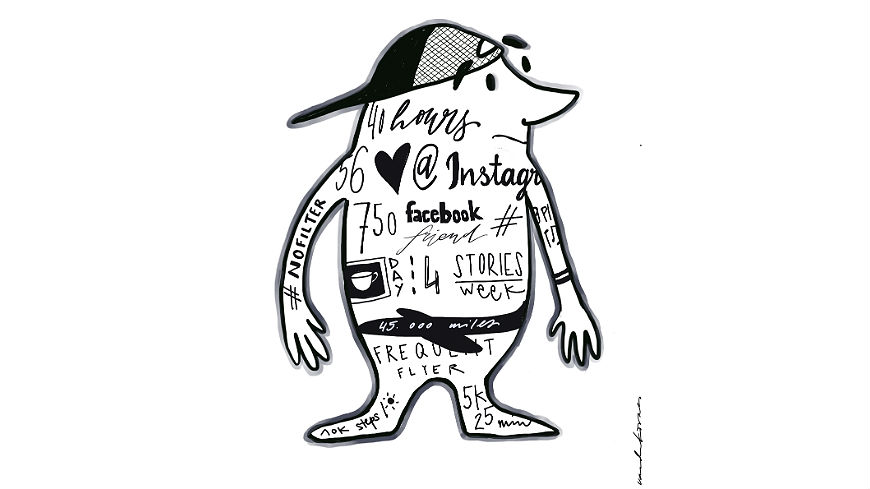Thinking data
by Anne Kivimäe
11/06/2018
Young people, youth work and youth policy have increasingly been the focus of research over the past few decades – but what are the opportunities and dangers presented by the data-centred digital developments in the youth field?
Thinking about the core of youth work brings to mind thoughts about young people doing something together, experiencing new things and learning useful things from it all; about young people being social. In addition, it has been perhaps a growing concern about how to get young people away from different type of screens – phones, tablets, computers, etc. The battle surrounding the use of digital tools in youth work has often been to do with exactly this – supporting being social vs being digital (and alone with your screen). Too often the discussion about digital youth work only concerns these issues and tries to find arguments or justifications for one of the viewpoints or for the fact that it does not have to be a one-or-the-other type of choice. This, however, limits the discussion considerably and omits some of the very important issues: the issues of how digital technologies influence the lives of young people now and in the future, the issue of what being social means in the digital age and the issue of how data is becoming a new currency and what this entails for young people, for example.
 Social technologies?
Social technologies?
Sociologist Noortje Marres has argued[1] that digital technologies are increasingly being redesigned to be “social” – to support interaction, connection and exchange; at the same time, these technologies actively structure and format social life in a way that allows it to be analysed and influenced. This tendency has to do with a lot more than just platforms like Facebook or Twitter, where the user is guided by prepared choices such as the “like” button or a limit on the number of characters that structures the way people interact or defines their social behaviour. It also has to do with changing patterns of what is acceptable/expected in a group. Take the changes in usage of smartphones. Or look at a modern example of social interaction – what do you think of the idea that companionship could be provided by robots and that advice could be provided by chatbots (automated conversation programmes designed for various purposes like customer service or information acquisition)? What should be the relationship between the citizen and the state, what should active citizenship mean in the context of, say, the Estonian e-residency programme? And this is only a very small choice of examples. As it has been argued, being social is becoming more technical and digital data is becoming the primary mediator of the social.
 Digital futures
Digital futures
To complement this picture, there are intensive discussions about future jobs and predictions about how many jobs will still be left for humans to do, discussions especially relevant to young people now. Artificial intelligence (AI) researchers from the universities of Oxford and Yale[2] believe that in many areas machines will be better than humans quite soon (by 2024 machines will be better at translating languages, by 2027 at driving a truck and by 2049 at writing a bestselling book). Even if one approaches the predictions about humans losing their jobs to machines with deserved scepticism (looking back, technology has created more jobs than it has wiped out) it is clear that competences connected with digital technologies are increasingly necessary for young people, not to mention the knowledge and understanding needed to live in an increasingly digital world.
With their emphasis on a youth-centred approach and their multidimensional involvement with the lives of young people, youth policies and youth work are deeply connected with these (and many other) aspects of the digital era.
 Better youth knowledge in the digital era
Better youth knowledge in the digital era
However, having a deep connection does not automatically mean having deep knowledge; about changes, about development and, most importantly, about the realities for young people. The need for knowledge is nothing new in the youth sector nor is the complicated magic of collecting and using it. More than 50 years ago, in 1967, the Parliamentary Assembly of the Council of Europe adopted an order, “Study of Youth problems in Europe”, which stated that “…the importance and the acute character of youth problems justify, at the European level, an inter-disciplinary survey…” and that “...a survey of this kind is a necessary preliminary to any attempt to sketch out a European youth policy…”. In the European Union “better knowledge of young people” was raised as one of the priorities in the White Paper on Youth in 2001 and has since been followed by several decisions and instruments in the framework of European Union co-operation in the youth field. Much has been done in many countries – youth monitors, support for youth research, systematic formats for research-policy-practice co-operation, attention to knowledge in policy priorities, etc. However, the important questions – such as what young people need, where and why youth policy should intervene and how youth work could have the most relevant impact – remain, and good, sufficient answers are still hard to come by. If we look at this drive for knowledge as a basis for developments in the youth field from the viewpoint of technology, could better, faster and more usable answers, and better knowledge for the youth sector already be available?
 “New” and “old” data
“New” and “old” data

The term “datafication” has recently been coined for a world where “everything is data” and more and more aspects of life can be analysed using data. And as we can see from our own everyday life – from the fact that data has become a business currency and the measures needed to control developments, such as the adoption of the EU General Data Protection Regulation, GDPR[3] – datafication is only likely to grow. History has shown how words, locations, relations, emotions, etc. become data and because of the technological developments enabling the creation of big data, “we will no longer regard our world as a string of happenings that we explain as natural or social phenomena, but as a universe comprised essentially of information”.[4]
In addition to revolutionary new sources and volumes of data, there is also a growing amount of “good old” data gathered about young people in national registers and through research. Governments need to plan policies based on knowledge, to see and explain the clear results of measures and the impact of public funding. This often entails commissioning new studies and creating new indicators to follow; in other words, gathering more data. When we in Estonia mapped youth data-gathering (using only national registers and nationwide research) in 2017, we obtained a list of more than 100 mostly independent or unlinked databases.
Yet, in this era of abundant data, there are still problems with knowing enough about youth work and young people and with having not enough youth work-specific and youth policy-specific research, futures studies and prognoses available. Neither are there enough good indicators for youth work and youth policy. On the other hand, most of the data already gathered are not used for youth policy and youth work.

 Data-driven developments for youth work and youth policy
Data-driven developments for youth work and youth policy
To cater to the growing need for analytical support in planning and delivering youth policy goals and in developing youth work, a systematic approach to both “new” and “old” data is needed in the youth sector.
First, there is the data-awareness issue among all stakeholders and especially young people. The ownership of data has to be better acknowledged by all in order to be able to decide how, why and with whom to share it. Conscious choices could then be better understood, but also opportunities for using those developed. One could envisage young people donating their data for youth work development and having their say on new solutions – a version of active participation, really. At the same time, youth workers and policy makers need to think twice about data formats, the ability to analyse and especially about gathering new data instead of reusing already existing data. Statistics Estonia is currently, together with the Estonian Youth Work Centre, conducting a study on reusing the data already gathered and it is remarkable how many new compositions of old (already gathered) data can be created that have never been composed before. The development of technologies for analysing large amounts of data also allows us to look for new correlations in already gathered datasets and search for changes that could indicate trends and be useful for foresight.
Second, the issue of using big data for policy making and achieving a better understanding of young people has for a large part to do with the ability of the youth sector to ask the right questions. It is not the “why” questions that can be answered through big data analytics, it is the “what” questions – to a certain extent. It is most important to understand what areas of youth work or youth policy could benefit from quick analyses of large datasets which have, so far, been left untouched. For example, data on the Wi-Fi usage in airports is analysed to direct services to places where more people are gathered. Offering no explanations as to why people are there, it is still usable for service provision. Perhaps obtaining impersonalised data from public transport cards or tickets used by young people could be helpful in directing visual information or outreach youth work services provision. Maybe mobile location data (again impersonalised) donated knowingly by young people about everyday trajectories could inform participation initiatives. Or perhaps photos taken by young people during the darker hours of the day could be donated and analysed to inform safe youth work issues. Defining what types of insights the youth sector needs and could use is the first question to answer in order to start gaining from big data analytics.
Data-driven thinking – as is usually the case with any type of thinking – promises to be especially effective beforehand, when designing new measures, services, opportunities and activities for and with young people. Thinking about smart youth work entails developing solutions in youth work and youth policy that will consider technology, including digital data input and output, as part of planning and delivery, but also as part of bettering the implementation, experience and possible impact along the way. If it is acknowledged that technology could shape social behaviour, perhaps the way to think is to shape the technological solutions based on what is needed in youth work and for young people.
 Knowing the risks and limits is a must
Knowing the risks and limits is a must
In conclusion, no discussion about data-driven developments can be complete without discussing its limitations and risks. The need for privacy and protection is self-evident and of fundamental importance. Another issue lies with the data itself and with the understanding that everything can be quantified and analysed as data. As with “classical” research in the youth sector, conclusions are rarely undisputable, and this is even more the case with big data analytics. Caution is especially relevant when thinking about social relations. Another issue to understand is that one cannot look at the digital data as somehow being a greater (or purer) truth, as being the only data that can provide high-resolution evidence about social realities. This caution is connected to the inequalities in access to technologies, to the context the data is produced in and to the ever-present lens through which the analyses are designed and conducted. Luckily, there is a discussion going on about the dangers and limitations of using big data.[5] Being aware of the risks provides a necessary platform for ideas that enrich and do not endanger knowledge-based youth work and youth policy.
1. Marres N. (2017), Digital sociology, Polity Press, Cambridge.
2. Grace K. et al. (2017), “When Will AI Exceed Human Performance? Evidence from AI Experts”: www.fhi.ox.ac.uk/will-ai-exceed-human-performance-evidence-ai-experts/.
3. More on the issue of EU data protection steps at https://ec.europa.eu/info/law/law-topic/data-protection_en.
4. Viktor Mayer-Schönberger and Kenneth Cukier (2013), Big Data – A Revolution That Will Transform How We Live, Work and Think, John Murray, London.
5. See, for example: http://blogs.lse.ac.uk/impactofsocialsciences/2018/02/07/an-emerging-iron-cage-understanding-the-risks-of-increased-use-of-big-data-applications-in-social-policy/.



